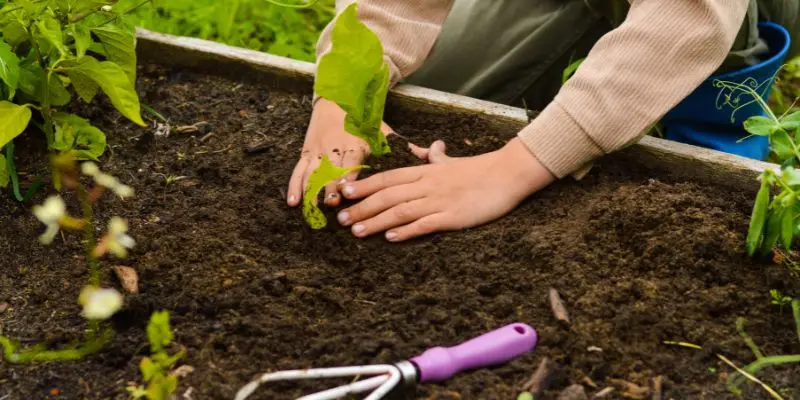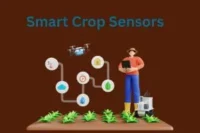How to Fertilize Soil Before Planting: A Step-by-Step Guide for Healthy Crops
Published: 17 Mar 2025
Fertilizing soil before planting seems like a straightforward task, but many gardeners and farmers find themselves wondering: How exactly do I fertilize my soil? Should I use organic or synthetic fertilizers? How much is too much, and how do I even know what my soil really needs? With so many options and steps involved, it’s easy to get confused about when, how, and what kind of fertilizer to use. But understanding the right fertilization process is key to ensuring your crops thrive, and we’re here to clear up all the confusion with this easy-to-follow, step-by-step guide!

1. Why Soil Fertilization is Important Before Planting
Before starting any planting process, it’s important to understand why soil fertilization is necessary:
- Improved Soil Fertility: Fertilizing soil replenishes essential nutrients, such as nitrogen (N), phosphorus (P), and potassium (K), that are often depleted in the soil. These nutrients are crucial for plant growth, development, and overall health.
- Boosts Crop Yields: Proper fertilization supports healthy plant growth, leading to higher and better-quality crop yields.
- Improves Soil Structure: Fertilizers, especially organic ones, enhance soil texture and structure by improving aeration, water retention, and microbial activity.
- Corrects Nutrient Deficiencies: Fertilization can correct soil nutrient deficiencies and balance soil pH, making it more conducive to plant growth.
So, guys, without wasting time, let’s jump into the article to learn How to Fertilize Soil Before Planting.
2. Step 1: Conduct a Soil Test
Why It’s Essential
A soil test helps you understand the existing nutrient levels and pH of your soil. Without a soil test, it’s difficult to know what nutrients are needed for your crops and how to adjust your fertilization. Testing ensures you don’t over-apply nutrients, which can harm plants and the environment.

How to Test
- DIY Soil Test Kits: Available at garden centers, these kits are easy to use and offer quick results. They give you an approximate idea of the soil’s pH, nitrogen, phosphorus, and potassium levels.
- Professional Soil Testing: Sending a sample to an agricultural extension office or lab is more precise and detailed. You’ll get a comprehensive report on the nutrient composition, pH, organic matter content, and any specific recommendations.
What to Look For
The results will typically include:
- pH Level: The ideal range is 6-7 for most plants.
- Macronutrients: Nitrogen (N), Phosphorus (P), and Potassium (K) levels.
- Trace Elements: Calcium, magnesium, sulfur, etc.
Why Fertilizer Selection Matters
Not all fertilizers are created equal. The right fertilizer can help correct nutrient imbalances in the soil and provide the specific nutrients your plants need. Choosing the right type of fertilizer depends on your soil test results and the crop type.
Types of Fertilizers:
- Organic Fertilizers: These include compost, animal manure, and bone meal. Organic fertilizers are slow-releasing and improve soil structure, making them ideal for long-term soil health.
- Synthetic Fertilizers: Quick-release chemical fertilizers that provide immediate nutrient availability to plants. They’re often used for rapid correction of nutrient deficiencies.
- Slow-Release Fertilizers: These fertilizers gradually release nutrients over time, providing a steady supply of nutrients for plants.
4. Step 3: Prepare Your Soil
Why Soil Preparation is Key
Preparing the soil properly before applying fertilizer ensures that the nutrients are evenly spread and are effectively absorbed by plant roots. Without proper preparation, nutrients might remain on the surface and not reach plant roots.
Steps to Prepare the Soil:
- Clear the Area: Remove any weeds, dead plants, rocks, or debris that may interfere with the fertilization process.
- Loosen the Soil: Loosen the soil using a shovel, rake, or tiller to a depth of 2-3 inches. This creates an environment for roots to penetrate easily and promotes better water and nutrient absorption.
- Check Soil Moisture: The soil should be slightly moist but not soggy. Water it if it’s too dry but avoid over-watering as it could cause runoff.
5. Step 4: Apply the Fertilizer
How to Apply Fertilizer Correctly
Proper application ensures that the fertilizer is evenly distributed and reaches the plant roots effectively.
- Granular Fertilizers:
- Spread the fertilizer evenly across the soil’s surface using a broadcast spreader or by hand.
- Work the fertilizer into the soil by lightly raking or tilling it to a depth of 2-3 inches.
- Liquid Fertilizers:
- Mix liquid fertilizers according to the manufacturer’s instructions.
- Apply with a watering can or sprayer, ensuring even coverage across the soil.

Important Tips:
- Even Distribution: Even application prevents hot spots that can harm plant roots.
- Avoid Direct Contact: Don’t let the fertilizer come in direct contact with plant roots or seeds to avoid fertilizer burn.
6. Step 5: Water the Soil
Why Watering is Crucial
Watering after fertilizer application helps dissolve the nutrients and ensures they are absorbed by plant roots. It also helps incorporate the fertilizer into the soil for better uptake.

How to Water:
- Water Thoroughly: Water the soil immediately after applying fertilizer. This helps activate the fertilizer and begins the nutrient absorption process.
- Gentle Watering: Use a watering can with a fine nozzle or a gentle hose setting to avoid disturbing the fertilizer layer.
- Avoid Over-Watering: Too much water can wash away nutrients and cause runoff.
7. Step 6: Allow Fertilizer to Settle
Rest Period for Nutrient Absorption
After applying the fertilizer, give the soil 1-2 days to absorb and incorporate the nutrients before planting. This rest period ensures that the fertilizer is fully integrated into the soil and reduces the risk of nutrient burn.
8. Step 7: Plant Your Crops
Proper Planting Techniques
- Follow the recommended depth and spacing for your specific crops. Proper spacing ensures that plants have enough room to grow and access the nutrients.
- Make sure to plant at the right depth to avoid seedling stress or poor growth.
9. Step 8: Monitor and Maintain Soil Health
Continual Monitoring
Once the crops are planted, regularly monitor the soil’s moisture and nutrient levels throughout the growing season. If needed, apply supplementary fertilizers or adjust irrigation based on plant needs.

- Signs of Nutrient Deficiency: Yellowing leaves, stunted growth, or poor flowering can indicate a lack of certain nutrients. In such cases, consider reapplying fertilizers.
- Soil Moisture: Regularly check the soil moisture to ensure plants receive adequate hydration without waterlogging.
FAQs about Internet
Here are some of the most frequently asked questions about How to Fertilize Soil Before Planting: A Step-by-Step Guide for Healthy Crops
Answer: The best time to fertilize soil is before planting, typically a few weeks before sowing seeds or transplanting seedlings. Conduct a soil test to check nutrient levels and identify deficiencies. Fertilize when the soil is not too wet or dry, and make sure it’s adequately prepared by loosening the top layer of soil.
Answer: The best fertilizer depends on your soil’s nutrient needs. Organic fertilizers like compost and manure improve soil health over time, while synthetic fertilizers provide immediate nutrient boosts. A balanced NPK fertilizer (e.g., 10-10-10) is a good starting point, but always tailor your choice based on soil test results.
Answer: Yes, organic fertilizers like compost, bone meal, and fish emulsion can be used for most plants. They release nutrients slowly and improve soil structure. However, some plants may require specific nutrients, so always check your soil’s needs before choosing an organic fertilizer.
Answer: Fertilizing your soil once before planting is generally sufficient for most crops. However, some plants, especially heavy feeders like tomatoes or corn, may need additional fertilization during the growing season. Always monitor plant health and soil conditions to determine if reapplication is necessary.
Answer: Yes, watering after applying fertilizer is crucial. Water helps dissolve the nutrients, allowing them to penetrate the soil and become available to plant roots. However, ensure you don’t over-water, as excessive moisture can cause nutrients to leach away, reducing their effectiveness.
Conclusion
Fertilizing soil before planting is essential for healthy crops and high yields. By following these detailed steps—from testing soil and selecting the right fertilizer to applying and watering—farmers and gardeners can ensure their plants have the proper nutrients needed for robust growth. Fertilizing correctly not only increases crop productivity but also improves soil health, ensuring a more sustainable and profitable gardening or farming experience.

- Be Respectful
- Stay Relevant
- Stay Positive
- True Feedback
- Encourage Discussion
- Avoid Spamming
- No Fake News
- Don't Copy-Paste
- No Personal Attacks

- Be Respectful
- Stay Relevant
- Stay Positive
- True Feedback
- Encourage Discussion
- Avoid Spamming
- No Fake News
- Don't Copy-Paste
- No Personal Attacks





